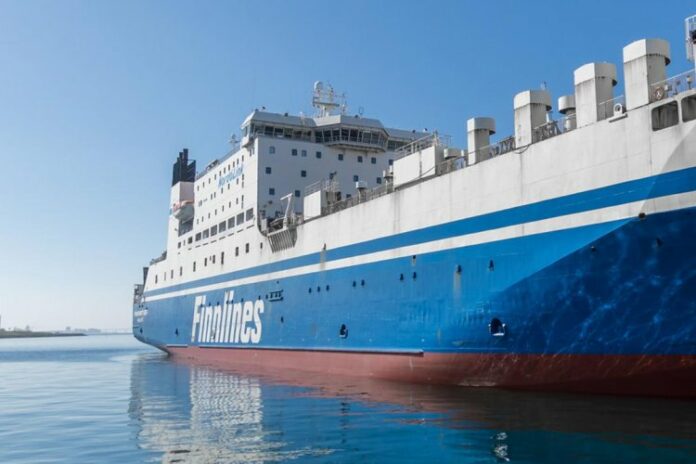As a new addition, a link between Ireland and Belgium will be launched.
To meet the increased capacity demand from customers, Finnlines is strengthening its services. The Company’s newest vessel, Finneco I, will be deployed on the Bilbao–Zeebrugge/Antwerp–Travemünde–Helsinki/Kotka–Paldiski route. The maiden call in Antwerp took place on 16 June 2022 and Helsinki will follow on 20 June 2022. Finneco II is expected to enter service in week 28 and Finneco III in week 29.
The three Eco class vessels have a transport capacity of 5,800 lane meters, each, equivalent to around 400 trailers, a capacity increase of nearly 40% compared with the current largest ships on the Baltic–North Sea–Biscay route. To reduce emissions, the vessels are equipped with many advanced technologies, such as air lubrication, a high-powered battery bank and solar panels. The Eco series vessels fly the Finnish flag.
The new hybrid vessels will bring many benefits to customers, including fast and efficient loading and unloading and they can carry any type of cargo, high and heavy, long and wide. A hoistable deck makes it possible to load units, which are up to 7 metres high.
In July, Finnlines will launch a new twice weekly service from Rosslare, Ireland, to Zeebrugge, Belgium. Demand for freight services from Ireland to Continental Europe has grown in the wake of Brexit and the new route will provide a crucial link for Irish industry. With transshipment in Zeebrugge, Ireland connection is available to cargo from Finland, Estonia, Germany, and Spain.
Tom Pippingsköld, Finnlines President and CEO, says:
“Finnlines continues to strengthen its services by increasing cargo capacity and offering a more extensive network to customers. We provide cost-efficient and high frequency liner services with the lowest CO2 emissions per transported cargo unit.”



